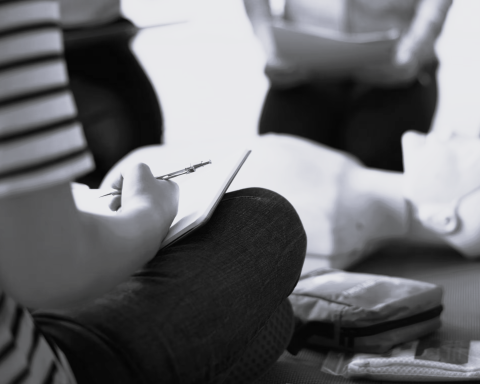Disasters cause collective social suffering, unprecedented destruction, and loss of life. Disasters affect millions of people, including families, as the smallest component of a community. Exposure to a disaster brings about adverse psychological disorders associated with trauma, including anxiety, complicated grief, and depression for those experiencing it. For the families directly affected by a disaster, experiencing such a catastrophic event can result in significant stress and trauma for the entire family unit.
Following a traumatic event, such as experiencing disasters, it is imperative for families to develop the ability to anticipate, respond to, and recover from crises and challenges encountered in the aftermath of these experiences. This ability can be called “family disaster resilience,” referring to a family’s capacity to effectively prepare for, adapt, and endure in the face of adversity caused by a disaster.
Given the adverse impacts of disasters on families, this article will discuss how a family can navigate the negative consequences caused by disasters and why developing family disaster resilience is critical.
Understanding family disaster resilience
Resilience has been conceptualized in the context of individuals as well as in regard to the family unit. Understanding family resilience following a disaster may help you understand why some families can adapt, grow stronger, or bounce back to the way they were before a disaster.
Indeed, some traumatic events, such as disasters, bring about loss, difficulties, and major disruptions in family income, housing, and overall stability. A family’s ability to develop successful functioning after a devastating event involves adaptation over time. After profound changes in living conditions caused by disasters, family resilience involves an ongoing process of maintaining family functioning especially in four basic areas:
- membership (keeping the family intact)
- educating and nurturing the young members of the family
- taking care of vulnerable members (such as the young members, the sick, and the elderly)
- providing economic support
Family resilience supports the individual resilience of its members. Families that are resilient tend to share some common characteristics. These include:
- having beliefs and attitudes that facilitate coping strategies
- trying their best to maintain rituals and routines with flexibility
- using effective communication to deliver information and express feelings
- showing adaptive problem-solving skills
Key components of family disaster resilience
As mentioned earlier, family disaster resilience is a family’s ability to anticipate, respond to, and recover from the adversity of disasters in a way that strengthens and maintains the family’s well-being and functioning.
To develop family disaster resilience, it is critical for you and your families to understand what the key components of family disaster resilience are:
Risk assessment and awareness
Understanding the risks and vulnerabilities of a region where the family lives constitutes this component of family disaster resilience. Being aware of potential hazards and how the multiple hazards could affect your families can help your families develop emergency plans that could minimize the negative impacts of disasters.
Disaster preparedness
Disaster preparedness refers to a family’s understanding of and knowledge about the steps that are needed to be taken for life survival and property protection during a disaster. Disaster preparedness helps families mitigate impacts and save resources that disasters can damage.
Adaptability and flexibility
Disasters bring significant changes in family lives. In this regard, being adaptable and flexible allows families to adjust plans and responses needed to ensure the family’s safety and well-being.
Healthy coping strategies
Family disaster resilience includes positive coping strategies which may encompass problem-solving, cognitive restructuring, emotional calming, and social support. Positive coping strategies are important for a family’s long-term mental health and recovery from the negative effects of disasters.
Community connection
The role of a community is critical in disaster recovery and preparedness, particularly in the importance of local knowledge, participation, action, and control in disaster response. Local communities surrounding a family can offer a sense of connection and decrease the isolation and abandonment that is often felt in the aftermath of a disaster.
Strategies for enhancing family disaster resilience
Remember that family disaster resilience is a gradual process, and there are various strategies that a family can do to enhance resilience to disasters gradually:
Develop a family emergency plan
Create a comprehensive family emergency plan that consists of contact information, evacuation and communication strategies, and meeting locations. A family emergency plan can help families ensure everyone’s needs are met and prepare the family members to safely evacuate when a disaster happens. Ensure all family members understand and practice the plan.
Prepare a family emergency fund
It is important for families to plan their finances ahead to anticipate the cost of rebuilding after a disaster. It is recommended that families who live in a disaster-prone area make an agreement with the family members to put away a specific amount of money each month for the family’s emergency fund.
Build social connectedness
Feeling socially connected is critical in developing family disaster resilience. For instance, families can develop a support network by connecting with a community organization to gain assistance in financial support, material goods, and services. Families can also reach out to other family members or professionals to talk about the disaster and how it makes them feel. Receiving support and the ability of a family to provide mutual support is one of the protective factors against the devastating impacts of experiencing a disaster.
Restore daily routines
Once everyone in the family is in a secure and safe place, restoring the family’s daily routines helps a family build a sense of belonging and being home emotionally, even without a physical home after a disaster. Simple routines such as bedtime stories and family walks can gather the pieces of daily life back, despite disasters disrupting every aspect of family life.
Benefits of family disaster resilience
Acquiring knowledge and its application in the realm of action is an effective way to reduce the adverse effects of disasters on families. Below are the benefits gained when a family successfully develops disaster resilience:
- Family disaster resilience facilitates knowledge transmission to reduce the risk of disasters in the household. Individuals who are familiar with the concepts of hazards and disasters can respond faster and better when disasters occur.
- Family resilience to disaster can reduce the risk of mental health disorders and maximize family resources such as social support, thereby buffering the negative outcomes of trauma.
In conclusion
The importance of developing family disaster resilience should not be overlooked. Disasters bring about immense disruptions and challenges to family lives. By engaging in the process of building resilience, families can mitigate the detrimental effects of disasters, be more prepared, and be better equipped to face adversities, and thus gradually build successful family functioning following disasters.
Family disaster resilience is an investment in the overall family well-being, safety, and stability. Through the transmission of knowledge, preparation, and collective effort, families can endure the challenges posed by disasters and build resilient and better futures for themselves.
If you would like to see more resources on disaster, check out the Family Science Labs. The lab uses the research of the Institute for Life Management Science to produce courses, certifications, podcasts, videos, and other tools. Visit the Family Science Labs today.
Photo by rawpixel.com on Freepik



